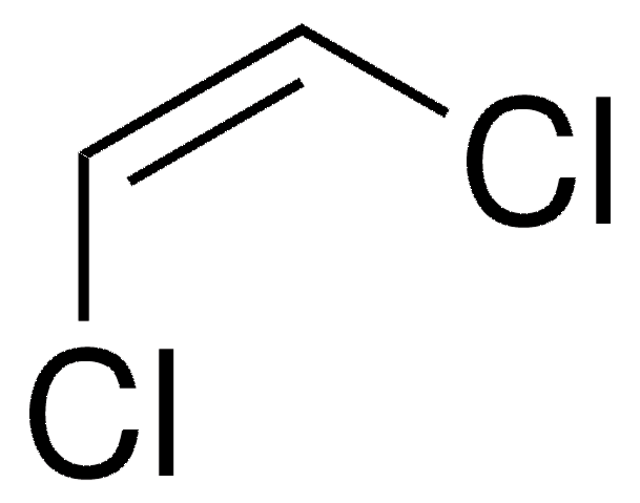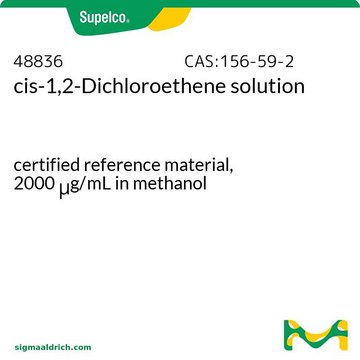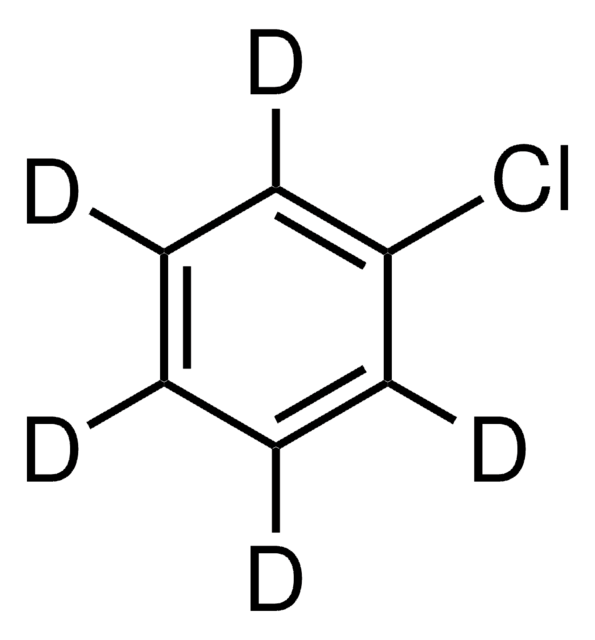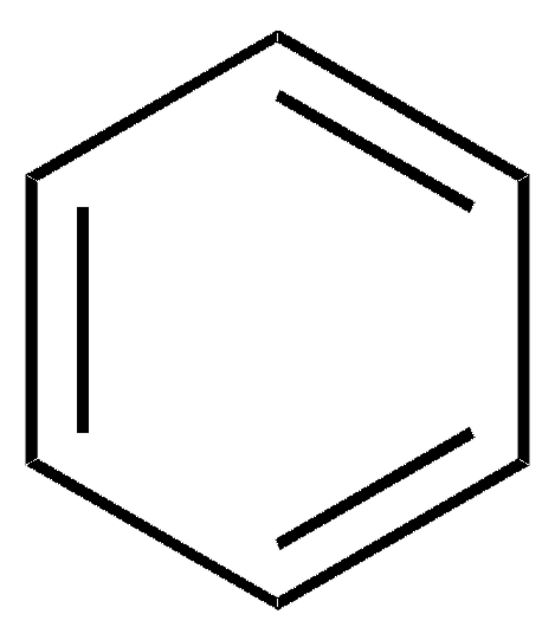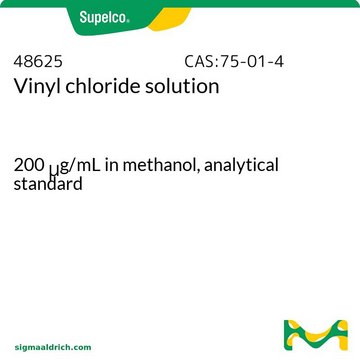48597
cis-1,2-Dichloroethene
analytical standard
Sinónimos:
cis-1,2-Dichloroethylene
About This Item
Productos recomendados
grade
analytical standard
CofA
current certificate can be downloaded
packaging
ampule of 1000 mg
technique(s)
HPLC: suitable
gas chromatography (GC): suitable
refractive index
n20/D 1.449 (lit.)
bp
60 °C (lit.)
mp
−80 °C (lit.)
density
1.284 g/mL at 25 °C (lit.)
application(s)
environmental
format
neat
storage temp.
2-8°C
SMILES string
Cl\C=C/Cl
InChI
1S/C2H2Cl2/c3-1-2-4/h1-2H/b2-1-
InChI key
KFUSEUYYWQURPO-UPHRSURJSA-N
¿Está buscando productos similares? Visita Guía de comparación de productos
Application
Optional
signalword
Danger
Hazard Classifications
Acute Tox. 4 Inhalation - Acute Tox. 4 Oral - Aquatic Chronic 3 - Flam. Liq. 2 - Skin Irrit. 2
Storage Class
3 - Flammable liquids
wgk_germany
WGK 2
flash_point_f
42.8 °F - closed cup
flash_point_c
6.0 °C - closed cup
ppe
Eyeshields, Faceshields, Gloves
Elija entre una de las versiones más recientes:
¿Ya tiene este producto?
Encuentre la documentación para los productos que ha comprado recientemente en la Biblioteca de documentos.
Los clientes también vieron
Protocolos
US EPA Method TO-17: GC Analysis of Volatiles on VOCOL® after Collection/Desorption using Air Toxics Tube
Nuestro equipo de científicos tiene experiencia en todas las áreas de investigación: Ciencias de la vida, Ciencia de los materiales, Síntesis química, Cromatografía, Analítica y muchas otras.
Póngase en contacto con el Servicio técnico